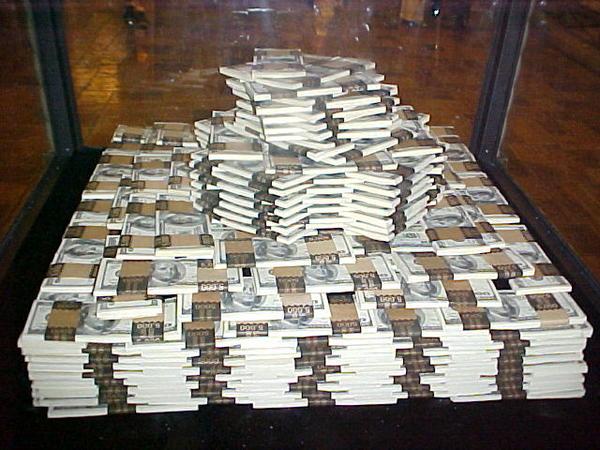
In march prices rose by more than 50% as Zimbabwe entered the hell of hyperinflation. That was followed, on Apr. 26, by a 98% official devaluation of the Zimbabwean dollar. Miners, farmers, tour operators, nongovernmental organizations, embassies and Zimbabweans living abroad can now purchase 15,000 Zimbabwean dollars with a U.S. dollar. For others the official rate remains at 250 per USD.
So, for a crisp $100 bill a tourist can now obtain 1.5 million units of currency from the Reserve Bank of Zimbabwe, rather than the previous 25,000. On the black market that same tourist can do much better, ZWD 3.5 million per $100.
The economic destruction caused by a decade of the world’s highest inflation rate—and now hyperinflation—is palpable. The nation’s economy is starting to implode, the Reserve Bank of Zimbabwe is insolvent and Zimbabweans are streaming into South Africa in search of work. This will end, as do all hyperinflations, with a regime change: either a new monetary system, a new political setup, or both.
Just reflect on what happened during the world’s last hyperinflation. It began in January 1992, in what was left of Yugoslavia, and peaked in January 1994, when the official monthly inflation rate was 313 million percent. (The worst month of Weimar Germany’s 1922-23 hyperinflation saw prices go up 32,400%.) The results were devastating. Long before NATO struck Yugoslavia in 1999, Slobodan Milosevic’s monetary madness had already destroyed its economy.
In 1999 Montenegro was still part of this mess, since its official currency was the discredited Yugoslav dinar. But the mighty German mark was the unofficial coin of the realm. As an economic adviser to Montenegro’s president, Milo Djukanovic, I repeated the great Austrian economist Ludwig von Mises’ description of sound money as “an instrument for the protection of civil liberties against despotic inroads on the part of governments. Ideologically it belongs in the same class with political constitutions and bills of rights.”
President Djukanovic knew that the German mark was his trump card, one that would not only stabilize the economy but also pave the way for reestablishing Montenegro’s sovereignty. On Nov. 2, 1999 he boldly announced that Montenegro was officially adopting the German mark as its national currency. The mark was replaced by the euro two years later.
The Montenegrin economy stabilized immediately and began its steady growth amid falling inflation. By 2005 its gross domestic product was growing at 4.1% and inflation had fallen to 1.8%. It wasn’t surprising that in May 2006 voters in Montenegro turned out in record numbers to give a collective thumbs-down to their republic’s union with Serbia. Montenegro was once again independent. And on Mar. 15, 2007 Montenegro signed a stabilization and association agreement, the first step toward European Union membership (with currency adoption normally coming at a later stage). President Djukanovic cleverly inverted the process, effectively integrating Montenegro with the Eurozone from day one.
As President Djukanovic did for Montenegro, South African President Thabo Mbeki might just hold the key to stopping Zimbabwe’s collapse. He has been appointed by the Southern African Development Community— a grouping of the nine Southern African countries, including Zimbabwe—to mediate Zimbabwe’s economic crisis. With a bold stroke Mbeki could stop Zimbabwe’s monetary rot and at the same time promote the interests of South Africa and other members of the league.
South Africa is at the center of the Common Monetary Area, which also includes Lesotho, Swaziland and Namibia. All three of these issue their own currencies but peg them to the South African rand at par. Moreover, the rand circulates legally in Lesotho and Namibia.
The nine-country league should propose that the rand common area be expanded to include Zimbabwe. A currency board, similar to the one that operated in Zimbabwe from 1940 to 1956 (it was called Rhodesia then) should be established. It should issue Zimbabwean dollars that would be fully backed by and convertible into rand at a fixed rate. The currency board should be initially capitalized by South Africa. In addition, the rand should be allowed to circulate legally in Zimbabwe. Adopting this plan is the only way to salvage what’s left of an economic wreck.
Author Steve H. Hanke

0 responses on "Hyperinflation"